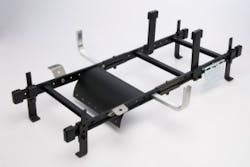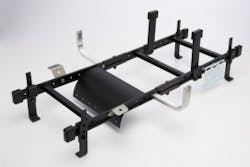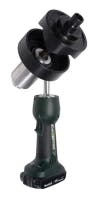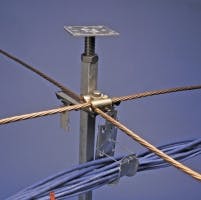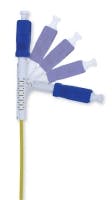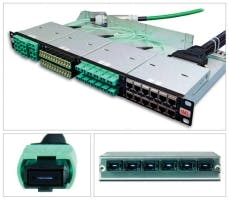Solarflare exits 10GBase-T physical-layer business
Solarflare has exited the 10GBase-T physical-layer (PHY) business by selling its 10GBase-T assets to an unnamed semiconductor foundry. The company will disclose neither the terms of the sale nor the merchant semiconductor company to which it was sold. Nonetheless, Solarflare emphasized in a statement that, "This deal will enable Solarflare's existing 10GBase-T customers to continue to use the company's leading 10GBase-T products."
While the company is exiting the 10GBase-T PHY business, by no means is it going away from the 10GBase-T market altogether. Rather, it will now focus its attention on the family of 10-GbE SFP+ and 10GBase-T server adapters it launched last year and the first part of this year. The company says its 10GBase-T adapters, combined with its middleware product OpenLoad, "have created a compelling value proposition for high-frequency traders by reducing latency and increasing message rates for TCP/IP traffic in market data feeds, while maintaining compatibility with customer applications and installed Ethernet and TCP/IP infrastructure."
Solarflare's chief executive officer Russell Stern declared, "We have now reached critical mass. Solarflare will continue to build on its success in the 10GbE server adapter market by growing share in high-frequency trading and HPC segments, and launching solutions targeting the virtualization and big-data segment."
Solarflare referred to data from World Federation of Exchanges to support the idea that major international equity exchanges and trading houses are under significant competitive pressure to process trades with virtually no latency. Solarflare positions its family of SFP+ and 10GBase-T server adapters to serve this market.
The rungs on Cooper B-Line's Redi-Rail Runway are not welded, allowing them to be removed in the field using everyday hardware. Cooper B-Line points out that the ability to remove rungs so easily means the runway can be modified to provide larger-than-normal spaces for cables to enter or exit the system. It also allows the user to pinpoint the location of a drop-out so it is directly over a rack or cabinet.
Redi-Rail is made of aluminum with 1.5- and 2-inch rail heights. Other heights are also available. According to Cooper B-Line, the holes located along the siderail offer flexibility in terms of where users can attach rungs, drop-outs and other accessories. Trapezes are not necessary, the company says, thanks to the system's hanger rod brackets.
The company says the Redi-Rail Runway was designed specifically for data cabling, and part of the system's design lets users install cables vertically along the runway path using cable-retaining posts.
Fire-rated pathway now holds more cables, performs better
The EZ-Path Series 44+ fire-rated cable pathway from Specified Technologies Inc. (STI) provides more cable capacity, better performance and the ability to be used on thicker walls than the original EZ-Path Series 44 did.
The thicker-wall capability is accomplished via an extension module, which is an optional item that extends the pathway's length by 6 inches.
Performance increases are realized in the pathway's L rating (for smoke leakage) and T rating (for thermal performance). According to STI's executive vice president Jim Stahl, the 44+ has an L rating less than 1 when it is empty. That, he says, is the best rating possible. Furthermore, he says, with other fire-rated pathways users must install additional materials or close sleeves in order to achieve such a rating.
Increasing capacity for cable was the first improvement that STI made when developing the EZ-Path Series 44+. As many as 240 Category 5e cables could fit into the original; the 44+ can accommodate over 10 percent more than that in the same footprint. Any system components used with the original Series 44 will work with the 44+, and the two systems can be ganged together.
Greenlee's LS50L battery-powered knockout punch driver can make a 6-inch hole in 14-gauge mild-steel conduit, or a hole up to 2 inches in diameter in 14-gauge stainless steel conduit. The driver has an 18V lithium-ion battery.
Greenlee points out that the driver also has a swiveling head that rotates 360 degrees. The tool has a one-trigger control, which according to the company senses when the hole-punch is complete. When that's the case, the tool retracts so no damage is done to it.
BICSI installation manual dives deep into data centers, healthcare, safety
The 6th edition of BICSI's Information Technology Systems Installation Methods Manual has been expanded significantly from the 5th edition, BICSI says, including individual chapters devoted to data centers, healthcare facilities and safety procedures. In addition, content from previous editions has been overhauled to be in line with new installation technologies.
The manual is 919 pages in length and available in print, CD-ROM and downloadable versions. It will be used in conjunction with BICSI's ITS Cabling Installation Program suite of courses in the months ahead, the organization says.
Following is a list of titles of the manual's 12 chapters.
Installation Foundations
Safety Procedures
Cabling, Pathways and Spaces
Bonding, Grounding (Earthing) and Electrical Protection
Copper Structured Cabling Systems
Optical Fiber Structured Cabling Systems
Firestopping Practices
Data Centers
Health Care
Planning and Project Management
Retrofits and Upgrades
Specific Applications
BICSI notes that individuals who wish to purchase a combination of the 5th and 6th editions of the Information Technology Systems Installation Methods Manual can do so at a significant discount.
Fire-alarm and security-control cable
Superior Essex recently introduced a product line of fire-alarm and security-control cable. The product line is wide-ranging in terms of the cables' construction.
It includes riser- and plenum-rated multi-conductor and coaxial cable. The riser-rated cables offer combined Underwriters Laboratories (UL) listings of CL3R and FPLR. The plenum-rated cables offer the combination of UL CL3P and FPLP. Superior Essex explains, "This benefit provides greater application flexibility for commercial installers. Additionally, the product line includes time-saving installation features such as CableID and QuickCount, and is packaged on light-weight plastic reels."
A fire-alarm and security product guide is available to view and download from the company's web site.
DAS, other in-building wireless systems reaching $10B globally
A new report from ABI Research covering in-building wireless systems comprises distributed antenna systems (DAS), repeaters, picocells and femtocells. According to ABI, the total global market for these systems will be close to $10 billion next year. The three largest vendors in terms of market share are TE Connectivity, Andrew (CommScope), and Corning, ABI says.
TE Connectivity gained a presence in the DAS market with its acquisition of ADC, which was announced last July and closed last December. Corning acquired MobileAccess in the first quarter of this year and integrated the business into Corning Cable Systems. Combined, these three companies account for nearly 60 percent of the in-building wireless systems market across the globe, ABI says.
ABI practice director Aditya Kaul pointed out the interesting geographic market dynamics of these systems. "While the Asia-Pacific region accounts for the majority of IBW deployments, most innovation is coming from North America where many of the largest vendors are based and where budgets can support the often considerable expense of IBW. A little later these innovations filter through to Europe, and then to Asia, where cost-effective solutions are in greatest demand." This observation is particularly interesting considering that ABI reports the majority of deployments will continue to be found in APAC, which is characterized by high population density and mobile penetration. North America and Europe, ABI says, show consistent but much lower levels of activity.
In rank-order, the user-organization types that are leading the adoption of these systems are 1) corporate campuses, 2) airports and railway stations, and 3) retail shopping centers. Healthcare facilities are a close fourth, the research firm says.
While those are the user types at which IBW systems including DAS are being deployed, the actual paying customer for the installation of these systems is not always the property owner. ABI says the actual purchaser usually is the entity with the most to gain, and can be the enterprise, building owner, transport authority, mobile operator or other.
ABI industry analyst Xavier Ortiz says that constantly growing data traffic, rapid uptake of data-oriented personal mobile devices, and consumers' heightened expectations for service are the main drivers of IBW system deployment. "Many organizations now appreciate the added value IBW systems can bring," he said, "and the economic recovery now underway in many regions has meant the resumption of deployments that were shelved during the worst of the slump."
Leviton introduces fiber-cabling enclosures
The Opt-X 1000i and Opt-X 500i rack-mount fiber enclosures from Leviton create a crossconnect or interconnect between a network's fiber backbone and active equipment. Leviton says the enclosures use minimal rack space (between 1 and 4RU depending on the model and options chosen).
Opt-X 1000i replaces Leviton's Opt-X and RDP enclosures. It is available in sizes between 1 and 4 RU. The 1- and 2-RU designs include a sliding tray that gives users access to the front and rear after it is installed.
Opt-X 500i replaces Leviton's Opt-X 500 and 250. Leviton describes it as an economical option for smaller enterprises. It is available in 1-, 2- and 3-RU sizes with flush-mount adapter bulkhead for moves, adds and changes. Other features, the company adds, ease accessibility and cable management.
The Universal Pedestal Clamp from ERICO is, according to the company, a means of enabling fast, simple and economical field construction of mesh bonding network (MBN) and cable management systems in data centers and computer rooms. In addition to multiple cross-wire bonding connections, each connector will also accommodate additional pigtails that can be used to connect to building steel or equipment.
The bonding conductor does not have to be bent at each pedestal, ERICO explains, in order to conform to the grid pattern. This minimizes time and labor, the company notes. The clamp provides an attachment point for Caddy J-hooks and is made of stainless steel. It complies with National Electrical Code Articles 250 and 300, ERICO says, in addition to being UL-listed as a grounding/bonding clamp in addition to a cable support.
Molex updates intelligent physical-layer management system
Molex Premise Networks has released Version 2.0 of MIIM, its intelligent physical-layer management system. As was the case with previous versions of MIIM, it detects all physical-layer connections from switch to work area in real time. The system's intelligence enables it to sense any physical change made in the channel, which devices are affected by the change, and identify the specific location of the device on a building map.
What's new about Version 2.0 are the ability to communicate with other systems using SNMP, which enables faster and more-accurate updates on the status of Ethernet channels, Molex says. MIIM 2.0 also can provide information to other network tools, including network management systems, about events such as work orders, channel changes, alarms and log entries. A user can configure the system to send alarms to multiple other systems. The user can also define the set of alarms each system will receive from MIIM.
Another new feature included in 2.0 is the Device Discovery Toolkit, which includes global discovery, detected discovery and event-driven discovery. All three discovery types populate the MAC and IP addresses of any discovered devices to the MIIM database, including wireless access points and Voice over Internet Protocol phones, as well as the discovery of other devices that are attached to the device at the end of the channel. According to Molex, global discovery of devices enables the discovery of any device attached to any switch connected to MIIM. Directed discovery allows the user to determine end device information for specific switch addresses. Event-driven discovery is unique to MIIM, Molex says; it immediately detects and communicates changes to a complete channel when devices are added or removed.
The new version also includes a number of report templates, definable reporting parameters and the ability to view reports on the screen or export files in several different file formats.
Fiber-to-fiber 10GbE media converters
Transition Networks recently introduced 10-Gbit Ethernet fiber-to-fiber media converters. The xTGFF4747-100 version of the converter supports XFP modules and the xTGFF4848-100 version supports SFP+ modules. As Transition Networks points out, the converters offer fiber-extension and fiber-mode-conversion capabilities. The converters, Transition says, help both enterprises and service providers extend their fiber reach for specific applications and support applications like video that consume considerable bandwidth.
A user of Transition's 10-Gbit/sec media converters can choose the specific module that meets the user's transmission-distance requirements. Converters in the 10-Gbit product line can reach distances of 80 kilometers. They can also be used as an interface between multimode and singlemode fiber.
Patrick Schaber, global director of marketing at Transition Networks' parent company Communication Systems Inc., commented, "The demand for 10 Gigabit Ethernet is being driven by the increasing need to deliver multi-gigabit connections to the network edge, helping to reduce the potential bottlenecks associated with increased traffic from bandwidth-hungry applications. This is where 10G is finding a lot of activity, and where Transition's 10 Gigabit media conversion and fiber extension is ideal."
The converter is available as a standalone device or as a card in the company's Point System Chassis. The company says it supports 3R optical signal regeneration - reamplify, reshape and retime. In the case of the chassis cards, if the chassis system is managed, the card can be as well.
Anixter's data center seminar hits the road again
This year Anixter is once again taking its seminar focusing on data center standards and technologies to movie theaters in major cities in the United States and Canada. Having begun May 24 and wrapping up November 3, Anixter is presenting ipAssured: Converged Infrastructure Solutions for Data Centers.
Anixter states, "Over the last decade, the transformation of enterprise networks through the innovative use of technology has allowed voice, video and data systems to be seamlessly integrated for improved management and increased cost effectiveness. As network infrastructure systems continue to consolidate into a single Ethernet protocol environment and physical security becomes more crucial to a data center's design, Anixter is continuing the message of optimized, secure and sustainable data centers in 2011 with its seminar series."
The 3.5-hour event will include a movie presentation, a live panel of subject-matter experts, and professional networking opportunities. Among the panelists this year are Chris DiMinico, who contributes to several of the IEEE committees that develop standards related to data center networks and technology; Louis DeFalco, corporate director and officer of safety, security and investigations at retailer ABC; and Ted Behrens, vice president of product management at Chatsworth Products. Other industry and data-center professionals will also join the various panels throughout the tour.
The seminar will follow two scenarios: 1) a data center build from the ground up, and 2) the upgrade of an existing data center. For both situations, the seminar looks at the latest standards and technologies that should be considered when supporting the migration to converged infrastructures. Attention will be paid to energy efficiency and the physical security of the data center facility.
Following is the schedule of dates and cities for the event from June through November.
June 9 - New York City
June 11 - Minneapolis, MN
July 14 - Seattle, WA
August 11 - Raleigh, NC
September 8 - Washington, DC
October 4 - Vancouver, BC
October 6 - Calgary, AB
October 20 - Dallas, TX
November 1 - Chicago, IL
November 3 - Denver, CO
In October 2010 Anixter launched its ipAssured for Data Centers program. As we reported at that time, the program addresses multiple subsystems that combine to make the data center its own ecosystem, comprising several systems that interrelate and can affect each other's performance. The ipAssured: Converged Infrastructure Solutions for Data Centers seminar series will address that concept in a live forum.
Attendance at the seminar is free, and attendees are eligible to receive credits toward certain professional accreditations from BICSI.
The Bendable Boot Jumper from AFL exhibits a variable boot angle that ranges from 0 to 90 degrees, its manufacturer AFL says. This flexibility allows installers to fine-tune an installation by placing the desired bend, in a controlled manner, in the boot and thereby enable proper routing at the point of connection. AFL says that using this jumper makes installations more manageable and organized, eliminating issues associated with cable tangles and draping fiber bundles.
The company further says these jumpers excel in low- or tight-clearance applications because they allow installers to closely route the assembly toward the fiber egress point of the enclosure. This reduces the probability of a break or sharp bend.
The German manufacturing, distribution and system-provider firm trans data electronic Gmbh (tde) has introduced a range of products to support 40- and 100-Gbit Ethernet optical transmission. The tML - tde Modular Link - system includes OM3 and OM4 assemblies with MPO connectivity. tde says its manufacturing methods produce low connector loss. "Even the technically demanding MPO/MTP connector comes with a typical connector loss of maximal 0.17 to 0.35 dB," the company says. This enables the tML system to meet the low loss budget of 1.9 dB required for 40/100 GbE.
The full tML system includes modules, trunk cable and rack-mount enclosures, tde says. They are all factory-tested. The rack-mount enclosure can house fiber-optic and twisted-pair modules. tde says the heart of the system is formed by the rear-mounted MPO/MTP and telco connectors, which enable the connection of at least six Gig or 10-Gig ports at once. For 40- or 100-Gbit Ethernet, the modules are replaced by front panels with MPO adapters. This allows 1,152 fibers in a single rack unit, tde points out.
Rebels hacked, rewired Libya's cell network for their own use
A compelling story from Wall Street Journal reporters Margaret Coker and Charles Levinson details how Libyan rebels–with help from individuals and governments supportive of their cause and without help from some equipment suppliers—rewired a portion of Libya's cellular-communications network to allow the rebels to communicate with each other.
The WSJ article states, "engineers hived off part of the Libyan cell phone network ... and rewired it to run independently of the regime's control." The article explains that the country's telecommunications infrastructure is built in a star topology, the center of which is Tripoli, allowing Colonel Moammar Gadhafi's government to control phone and Internet access. Libyan rebels had been without telecommunications access of any kind and were resorting to flag-waving during battles with government forces, the article says, before help from outside of Libya aided them.
The story details the efforts of Libyan-born, American-raised telecom executive Ousama Abushagur, who currently resides in Abu Dhabi. It reads a little like a work of international-espionage fiction, describing a telecom-equipment provider's contract with the nation of Libya and the company's refusal to supply equipment to the rebels as well as the roles of neighboring countries and their telecommunications companies in the hacking effort.
The story states that once they obtained the needed equipment and were on the ground—or perhaps more appropriately on the towers—in Libya, the system-installation crew "fused the new equipment into the existing cell phone network, creating an independent data and routing system free from Tripoli's command."
The story can be found on wsj.com by searching "Abushagur." Since its publication on April 13, the story received nearly 90 comments, some political and some technical in nature.
Verizon reduces kWh consumption by 18 million
In a statement issued jointly by Verizon and Polargy, the two companies stated that Verizon used Polargy's PolarPlex containment system in 12 of its United States data centers. The containment systems resulted in an annualized savings of 18.8 million kilowatt hours of energy use and a 7.7-percent overall improvement in energy efficiency. The 12 data centers that deployed the containment systems account for nearly 1 million square feet of facility space, the companies said.
The systems in place use a number of methods to keep hot and cold air separated in the data centers, including redirection of hot air, the installation of containment panels and blanking panels that fill empty spaces in racks and enclosures.
The project began last year and the companies say the measures taken have so far improved the data centers' Data Center Infrastructure Efficiency (DCiE) rating from an aggregate 0.45 to 0.5. Verizon's director of national technical operations Mark Capurso said using Polargy's PolarPlex cold-aisle containment system lowered his requirements for airflow along with air-conditioning use.
Notably, among the products and services Polargy provided to Verizon were approvals from local fire marshals. The concept of aisle containment has made some data center managers skittish because a containment system that goes all the way from a floor to a ceiling, or otherwise attaches to a facility's support structure, can put the facility in violation of fire codes. In this case, the companies say, Polargy saw to it that the plans for and ultimate implementation of the aisle-containment systems kept the Verizon data center facilities in compliance with local codes.
White paper provides hows and whys of wiring for wireless
A white paper from CommScope describes the benefits of properly cabling a building or facility for the support of future wireless technologies. The paper is entitled "In-Building Wireless Coverage and the Case for Pre-Wiring with CommScope's Wired for Wireless Solution." CommScope has trademarked the term "Wired for Wireless," as it is the name of a product line from the company.
The 13-page paper addresses the following topics:
In-building wireless design considerations
Minimum signal level thresholds
Antenna locations
Path loss versus distance
Reasons for installing horizontal cabling for wireless during initial construction
It then provides information on the Wired for Wireless system, including its components, features and benefits.
An annex to the paper includes additional guidelines for antenna-placement design.
The paper can be downloaded for free from CommScope's Web site. No registration is required.
Oberon positions wireless, networking enclosures for Cisco Aironet compatibility
Oberon recently released its Home and Office Network Cabinet, which the company says can provide the flexibility to organize virtually any small office's networking components. The company now notes that the products in this series are also especially intended for use with Cisco's recently introduced Aironet 600 Series OfficeExtend Access Point.
At 22x 22x 4-inch with adjustable shelves, hook-and-loop strips, and tie-downs for wiring, the company says the main cabinet in the product line is ideal for stowing and organizing routers, broadband modems, wireless routers, cellular femtocells, small network switches, power strips, network storage, external hard drives, and other components. The network cabinet surface mounts to the wall in minutes, says Oberon. The low profile allows the cabinet to be mounted virtually anywhere in the small/home/professional/remote office. The network cabinet's door is made of an impact-resistant ABS material which is virtually transparent to the wireless signal of the wireless router or cellular femtocell, making it uniquely ideal for stowing wireless products.
Also introduced this month, Oberon's Wireless Router Box is ideal for organizing smaller wireless routers and broadband modems. This 14x9x4-inch box can be flush-mounted by cutting an opening in the wall or ceiling and attaching to studs, or it can be surface-mounted using appropriate wall anchors. The WR-BOX includes two universal electronics brackets with hook and loop straps for mounting a wireless router and a broadband modem or other components.
The company says that both enclosures were designed to meet the needs of teleworkers, home users, small business and professional offices, and smaller office settings within larger buildings when combined with Oberon's corporate enclosure lines for full-building wiring.
